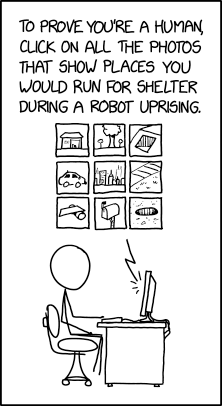While we may yet be a long way from the threat of truly sentient computers such as Hal 9000 and ARIIA, the current capability of AI technologies still offers plenty of power for those who wish to harness it for malicious purposes. These types of crimes go beyond the grey ethical areas that we discussed in our last newsletter, and dive into existing applications that are consciously misused, or new applications that are specifically designed with nefarious activity in mind.
(For an even more extensive analysis on the future risks from malicious AI applications, check out this detailed 2018 report authored by contributors from Oxford, Cambridge, and the Centre for the Study of Existential Risk – I just learned that is a thing!)
Though not necessarily dangerous on an existential level, the below examples of data related criminal activity shed some light on the dark side of AI and analytics:
Data hijacking:
These days, the right insights from a company’s data can turn into massive profits. Enter hackers, who with the commonly used SQL Injection Attack can steal, corrupt, delete, or manipulate the data a company is counting on for their analytics.
The rise of the botnets:
Not just one bad bot, but an entire nefarious network set up to do the bidding of the “bot herder.” The bot mitigation/fraud detection company White Ops offers a fascinating blog post highlighting some of the most notable botnets in internet history as well as a more detailed report all about 3ve – including details on the inner workings of this massive ad fraud operation, and how it was shut down.
The rise of the narco-drones:
This time rising both literally and figuratively, unmanned aerial vehicles (UAV – aka drones) are now being integrated with object recognition applications and AI data processing tools to speed surveys and analytics across a variety of industries. However, these same tools are also being utilized by drug cartels to scan for the locations/movements of law enforcement officers and to keep their smuggling operations under the radar (again.. both literally and figuratively).
Cheaters never prosper:
Except sometimes when they make improper use of analytics to help them win the World Series.
Unfortunately these examples don’t even begin to cover the multitude of threats that cybersecurity experts and ethical hackers are fighting against daily. Given our current dependence on technology and rapid exchange of information, awareness of the potential ways in which our data might be vulnerable is crucial In order to support informed decision making at an individual, corporate, national, and global level.
May you always use your coding skills for the greater good!
Ben’s Take
Where is my book?!
At the beginning of the pandemic lockdown, news shows started interviewing people from their home offices. Almost everyone had a bookcase in the background (except Claire McCaskill, who did her interviews from her kitchen, always with some new, delicious-looking baked good in the background under a cake dome). It’s still going on and a number of people even hawk their own latest book by placing it with the cover, rather than the spine, facing the camera.
What I’ve noticed through all of this though (and I look closely), is a complete dearth of the books Oracle8 Data Warehousing, Oracle 8i Data Warehousing, and SQL Server 7 Data Warehousing. Not necessarily great books but, well, books I worked on in the early 2000’s. Perhaps I’m asking a lot given that even my own parents didn\’t buy a copy, but it would be nice to see that somebody has them.
So, if you happen to see a copy of any of those books behind an interviewee on TV, please send me a screenshot. 20 years on, I still receive statements from the publisher telling me that I owe them money against the advance they paid us. I need to show my wife that it was all worth it.

